I love traveling to places that are lesser known, but spectacular. It makes me feel like I’ve found this great little secret. New Zealand of course is well known, but the New Zealand islands are not, and that’s exactly why they should be on your New Zealand itinerary.
The Subantarctic Islands, aren’t really a secret to Australians and New Zealanders, because they’re in their backyard. However to many other people, specifically North Americans, you’ve probably never heard of these island groups that lie in the Southern Ocean…until now.
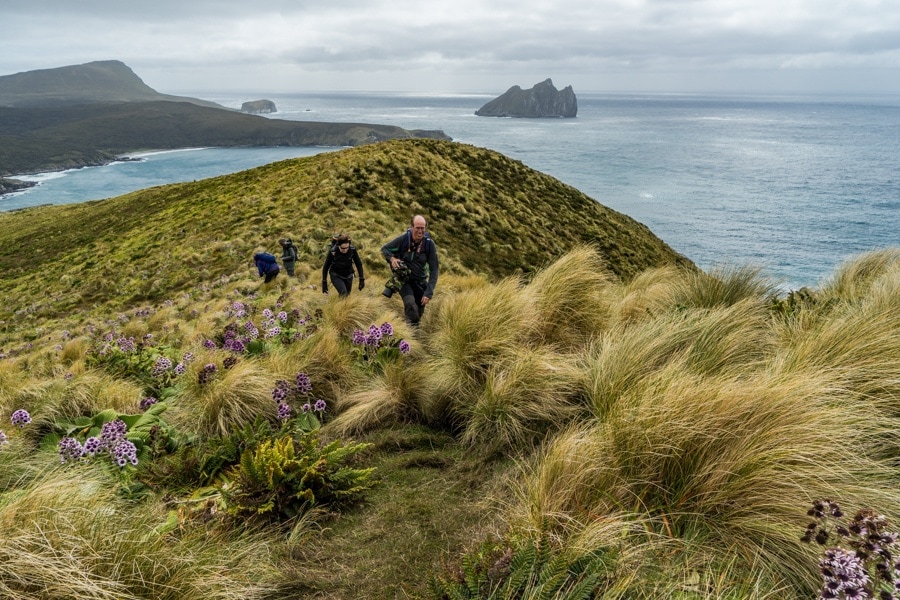
The discovery of most of these islands occurred in the early 1800s. Whalers and sealers set up temporary bases, the islands becoming one of the principal sealing stations in the Pacific in the years immediately after their discovery. The wildlife was nearly decimated during that time. After the sealing days and in more modern times people began to realize the uniqueness and remoteness of these islands, as well as the abundance of wildlife living here, and they became a destination in and of themselves.
Table of Contents
A natural wonderland
The islands are a nature wonderland. Most are uninhabited by humans, rugged, and even a bit lonely feeling. They are the only Subantarctic islands in the Pacific sector of the Southern Ocean. The islands sit spanning 47 to 55 degrees latitude thereby implanting them in the stormy latitudes of the Roaring Forties and Furious Fifties. It’s cool, cloudy, wet, and windy – rather bleak and depressing. But strangely, it’s exactly those dismal traits that make the islands so sought after to visit.
As a group, they were given UNESCO World Heritage Status in 1988 recognizing the ‘outstanding universal value’ and ‘superlative natural phenomena’ of the islands. Each island has different wildlife, flora, and fauna; much of it found no other place on earth. And that’s what makes the islands so special, they are unique, seldom visited by humans, and pure. Luckily they were on our Heritage Expeditions itinerary as a stop to break up the long cruise to Antarctica from New Zealand. We didn’t get to go to all of the islands, however, we stopped at a few main ones and were able to do landings, hike around, and experience the magic of the Subantarctic Islands of New Zealand and Australia.
Discover 7 things to do in Antarctica – that don’t involve wildlife
How do you get there?
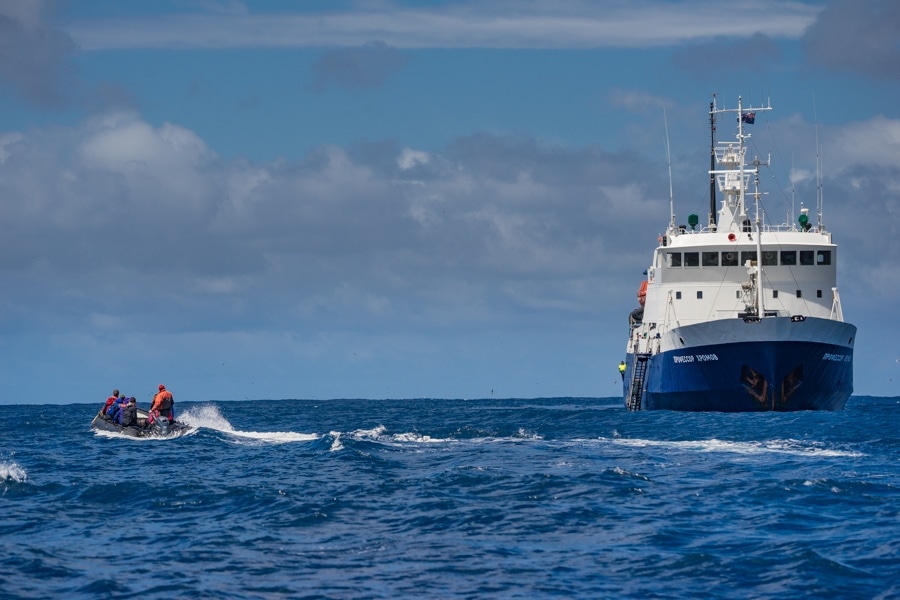
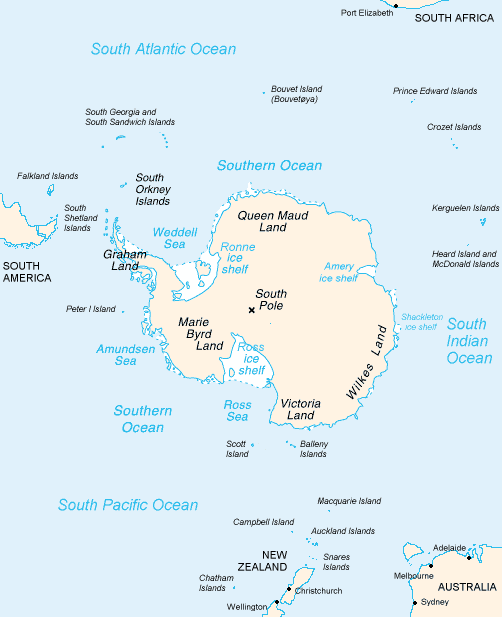
You don’t have to go all the way to Antarctica to get to these remote New Zealand islands. There are 10 to 12-day expedition cruises leaving from New Zealand that will take you through the notorious Southern Ocean, to all of these havens of abundant and unique wildlife.
Here’s some of what you’ll see on the New Zealand Islands.
The Snares Island
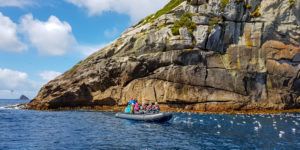
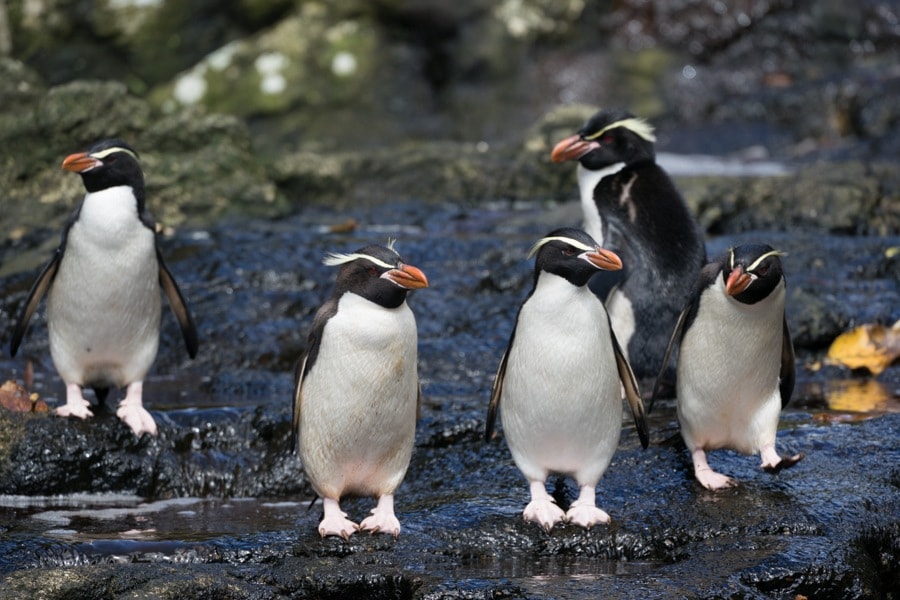
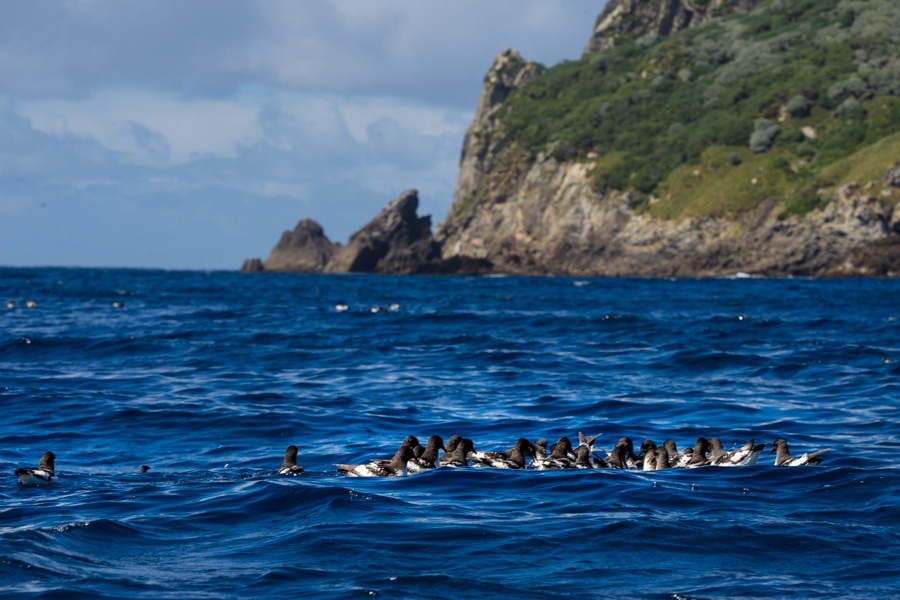
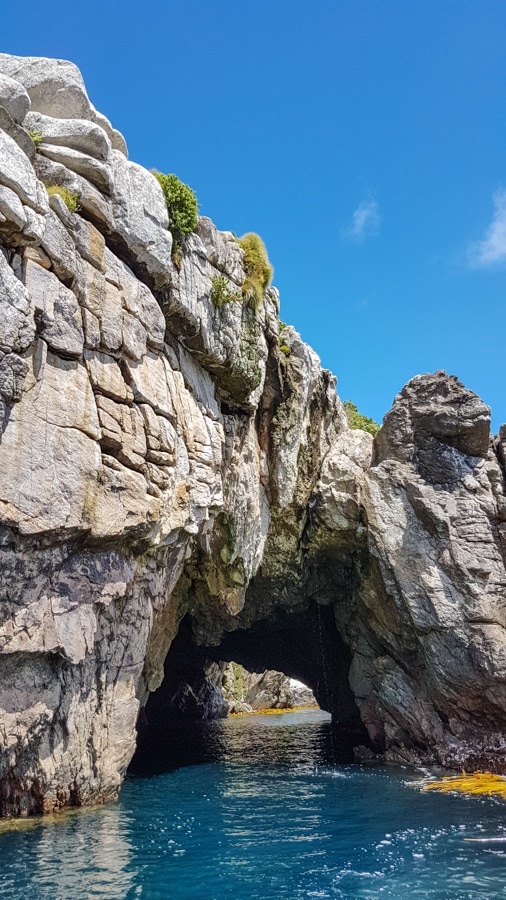
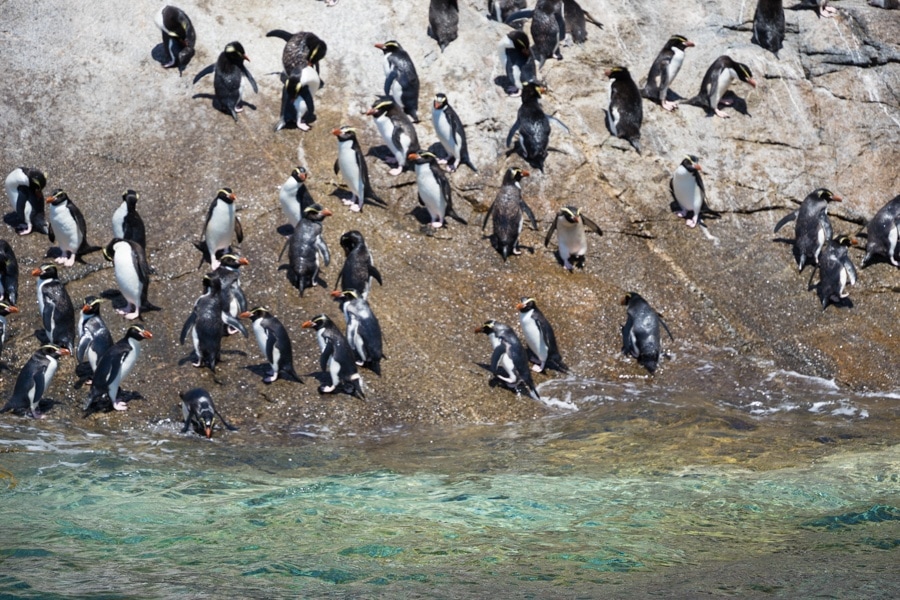
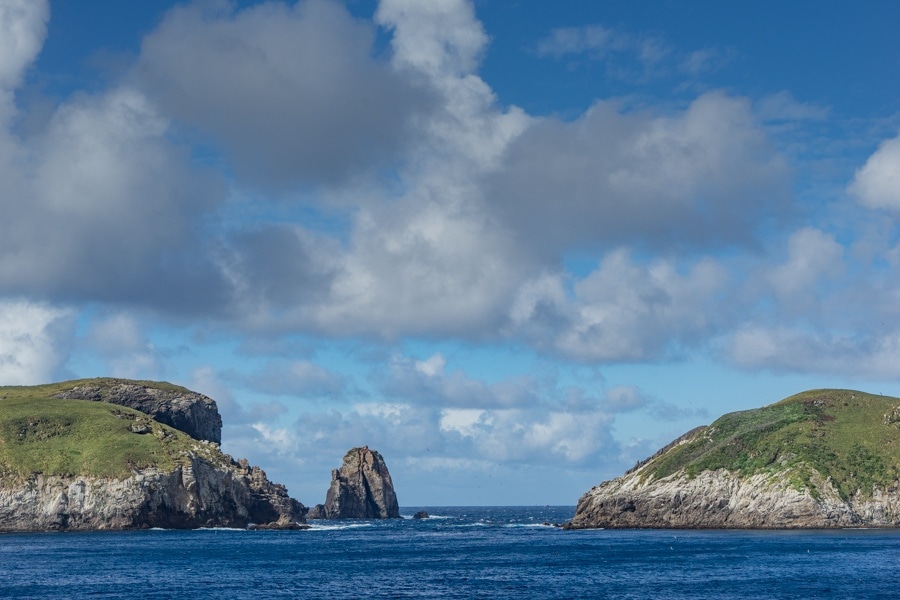
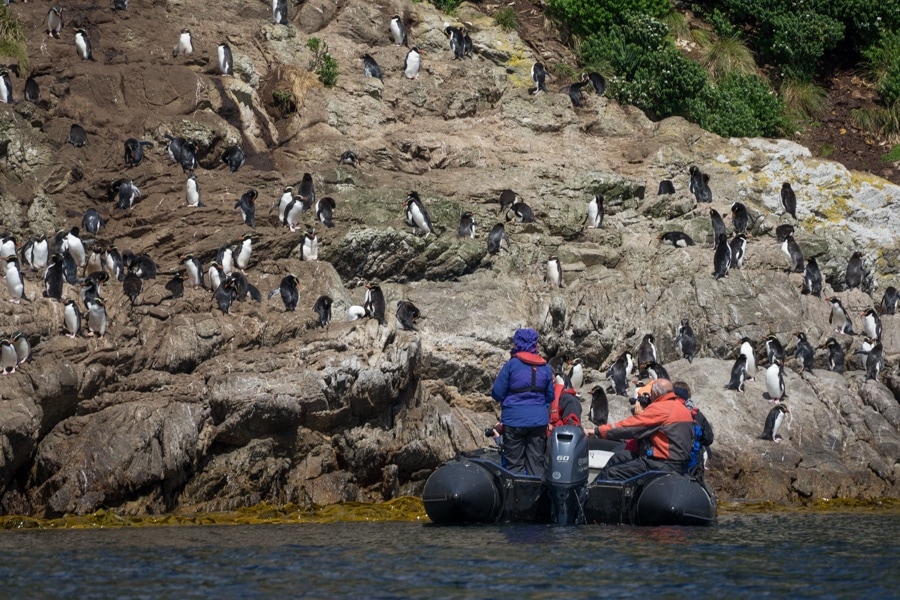
This is the closest island to the New Zealand mainland, about a 3/4 day voyage from Invercargill. It’s the only island of the Subantarctic Chain that has had no rodent infestation, which means it’s landscape is pristine and it’s a place for many breeding birds.
We were not allowed to land there, as no humans are allowed on the island. However, we did anchor off the island and took a zodiac cruise around the perimeter to see the birds and hidden coves. As we pulled up to the rugged island, swarms of Cape Petrels were floating in the water feeding on krill. Albatross sat in nests high up on the cliffs looking down on us. And it didn’t take us long to spot the many groups of Snares Crested Penguins hopping around the steep rocks. As we cruised around the little caves and coves we were able to begin to appreciate this pristine environment few people get to see.
Enderby Island (Part of the Auckland Islands)
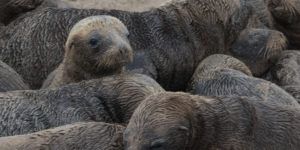
The Auckland Islands are the biggest landmass of all of the Subantarctic Islands. We stopped off at our ship’s namesake, Enderby Island, a small island at the north end of the chain. It was a windy, rainy, miserable day when we landed on the island, but the chance to walk around the island won out over comfort.
Sandy Bay was filled with what appeared to be ‘family’ groups of sea lions huddling together. The females and new pups lay on top of each other as the big ugly males chased off other males from their harem. There was more sex and violence on this beach than a soap opera!
After watching the sea lions we set off to cross the island via the boardwalk trail, while another group took the more adventurous hike around the perimeter of the island. The boardwalk trail took us through some forested area and then up on the exposed landscape where the wind howled with such a force that you could barely walk.
There amidst the wind gusts sat Southern Royal Albatross on nests as calm and regal as ever. We made it to the other side of the island to see the crashing waves against the cliffs. It rained sideways as we tried to eat lunch! It was a completely inhospitable day, but a good example of a typical day in the Auckland islands.
Learn how to visit 4 of the most remote and culturally fascinating South Pacific islands
Macquarie Island Australia
Technically this island is Australia’s island, however, it’s part of the subantarctic islands. This long narrow island is packed with wildlife. It was formally proclaimed a Nature Reserve in 1978 and the Tasmanian Parks and Wildlife Service operates a year-round research and management program on the island. There are currently 3 rangers there doing work and they greeted us at the Isthmus on a windy afternoon. The rangers led us on a tour of the Australian research base (approx. 40 people) where scientists conduct research on the island.
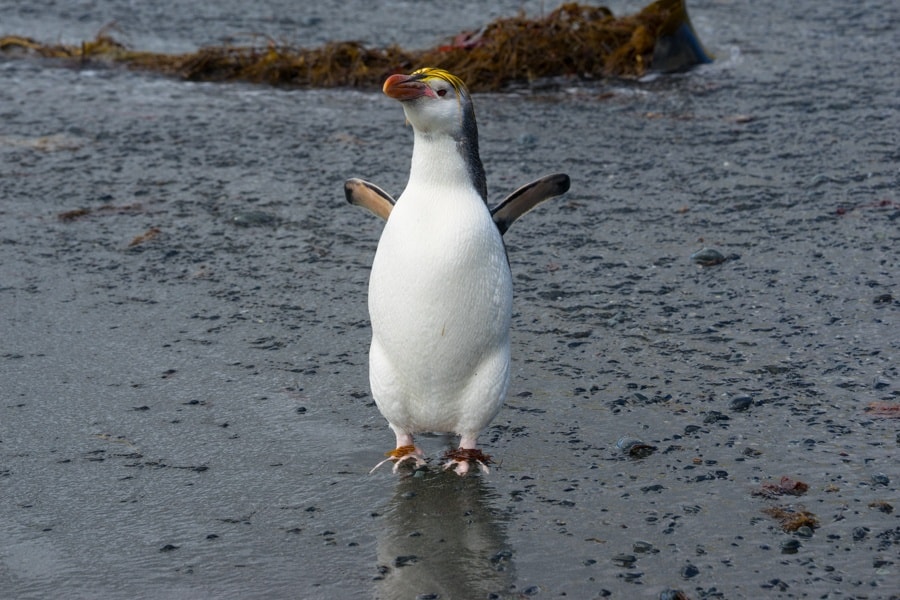
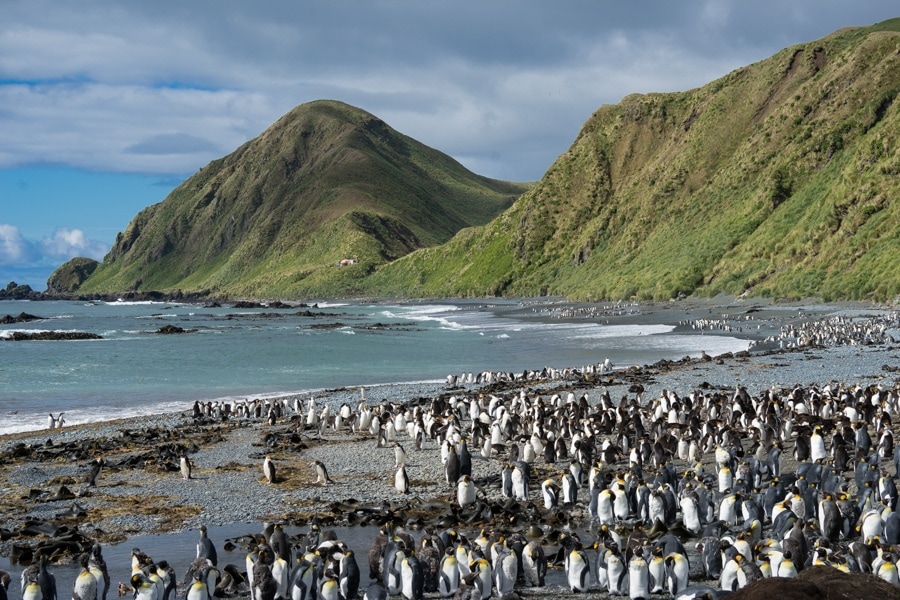
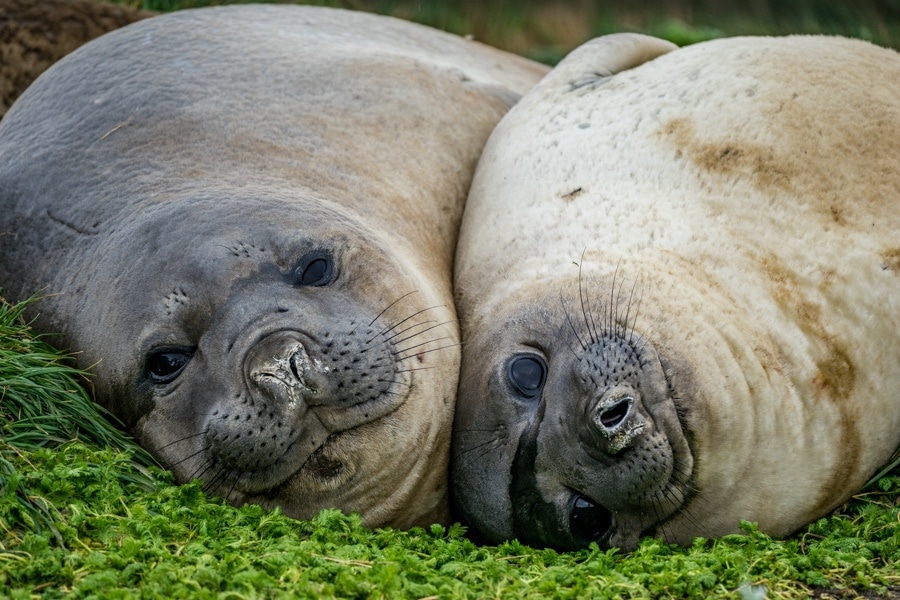
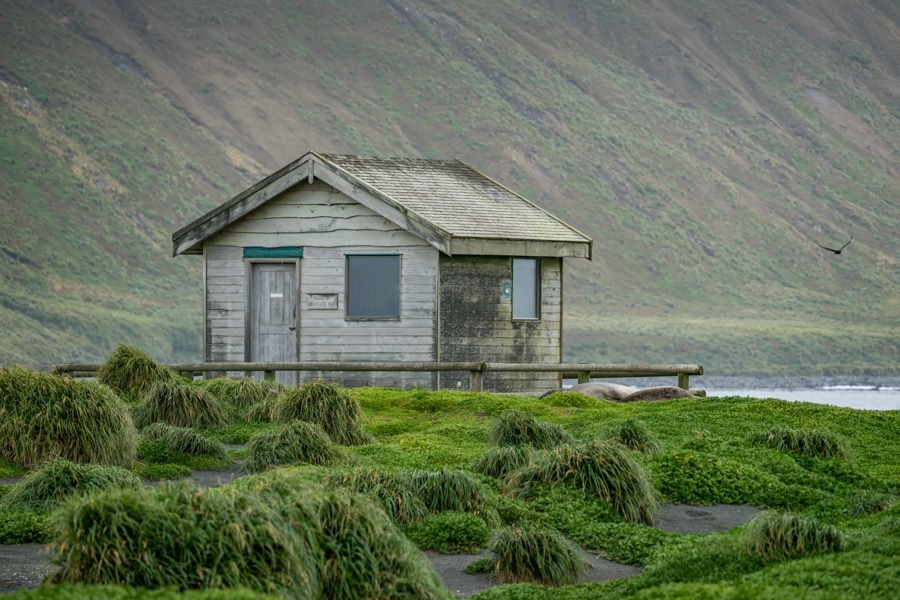

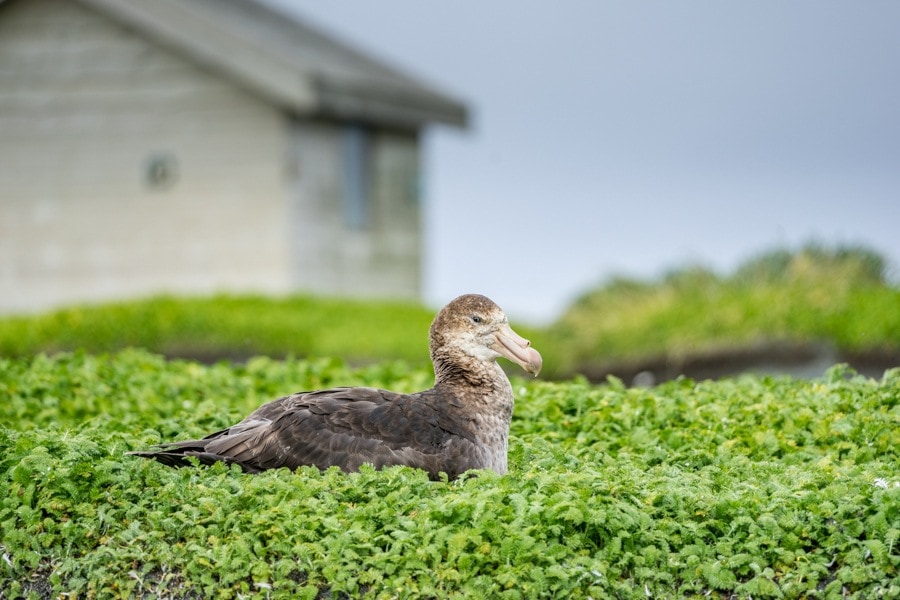
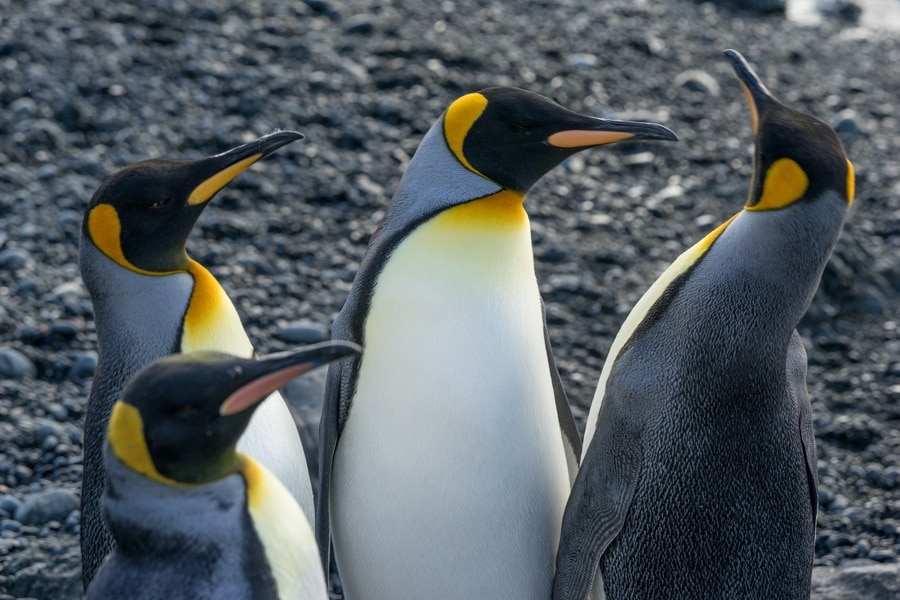
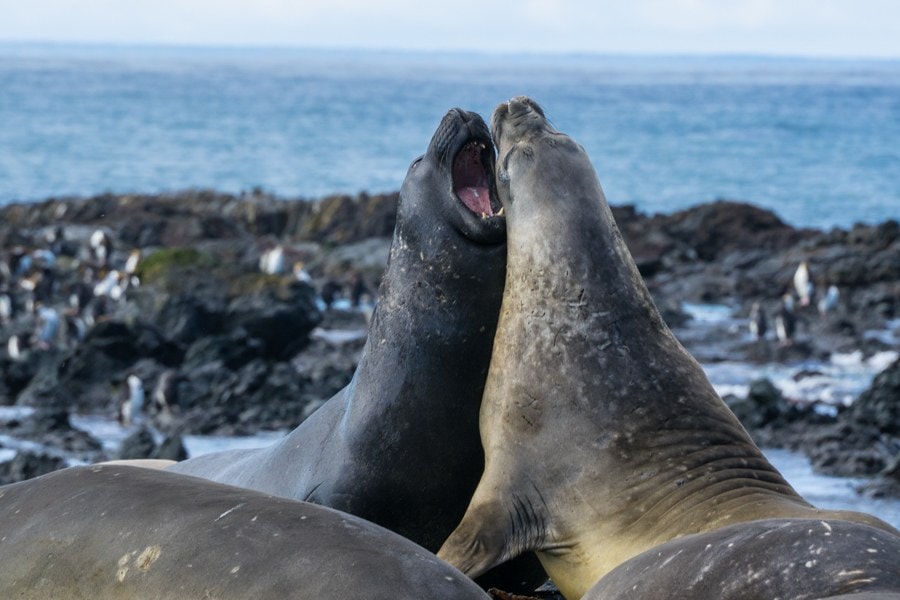
The Rangers took us on a short hike around the isthmus around the groups of non-breeding elephant seals. The seals were laying all over the island among the tall grasses and rocks places like a giant easter egg hunt! I hardly knew I was close to them until one of them moved or made some disgusting noise and I realized I was standing only a few feet from them!
We walked up to a high lookout as the sun started peeking out of the stormy clouds, giving us some spectacular views of the base and the landscape of the island. After a walk along the beach to visit some Royal, King, and Gentoo penguins, we warmed up in the mess hall with scones and tea!
We spent the next morning at Sandy Bay among 50,000 penguins (Royal and King) as well as fighting elephant seals. Interacting with the Macquarie Island wildlife was the highlight of my trip to the Subantarctic Islands!
Campbell Island
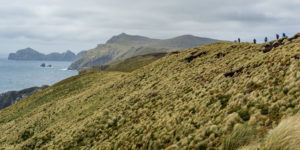

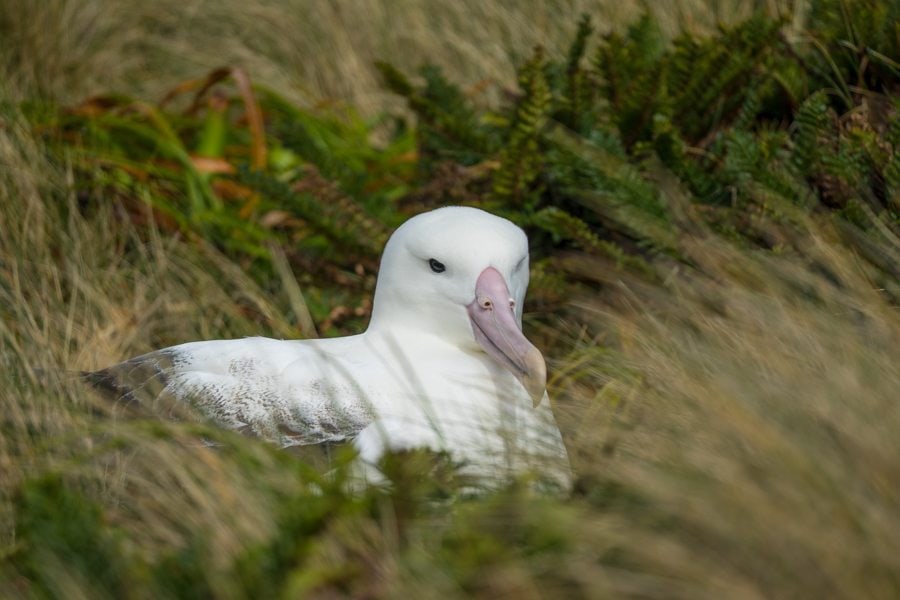
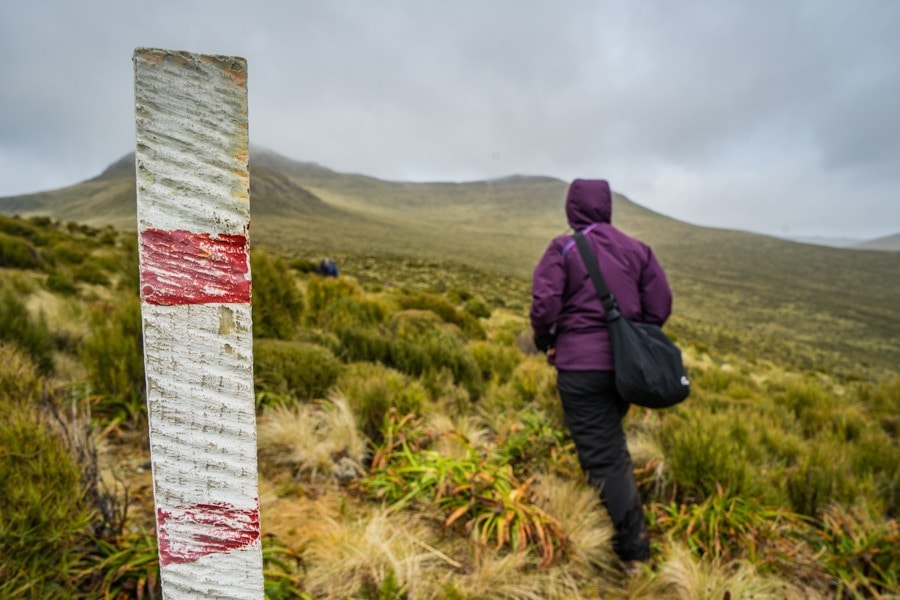
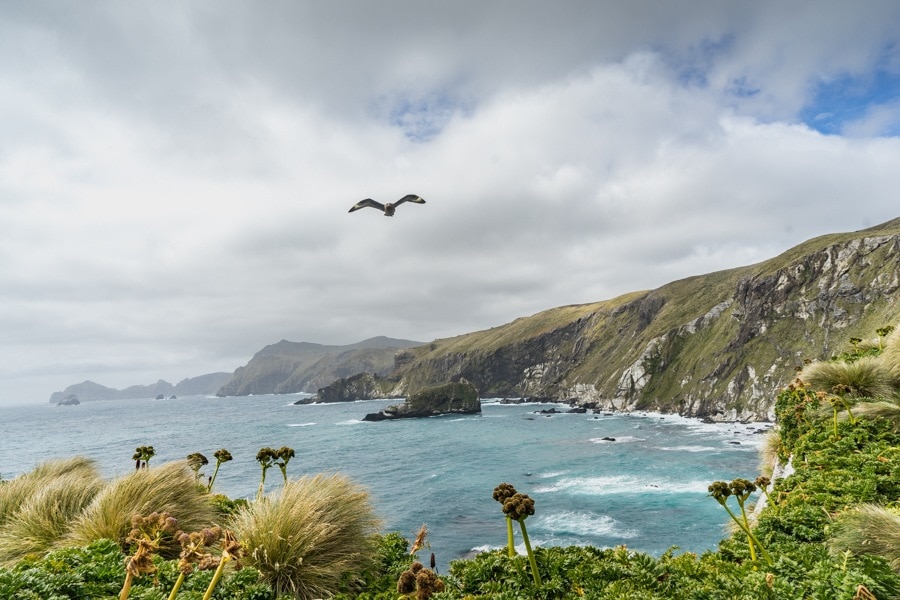
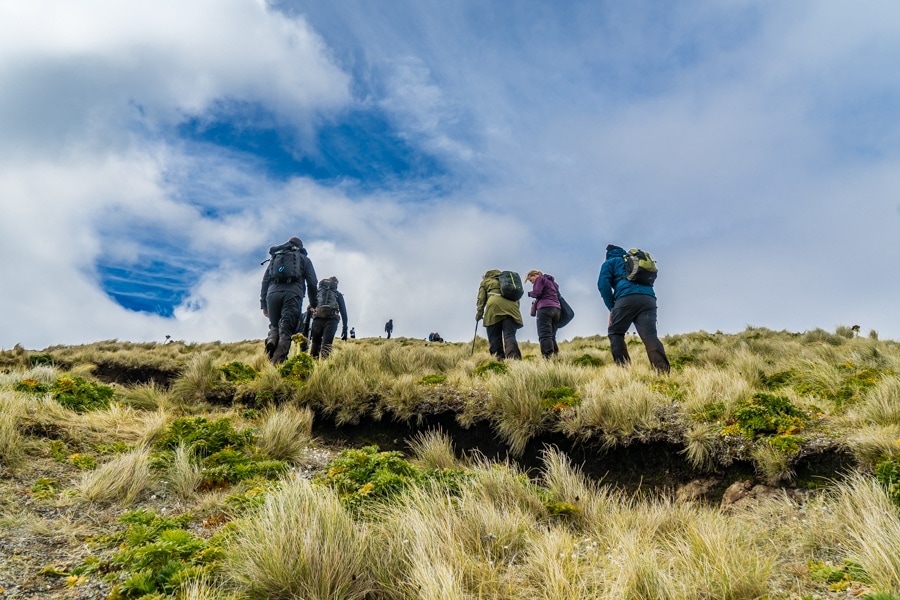
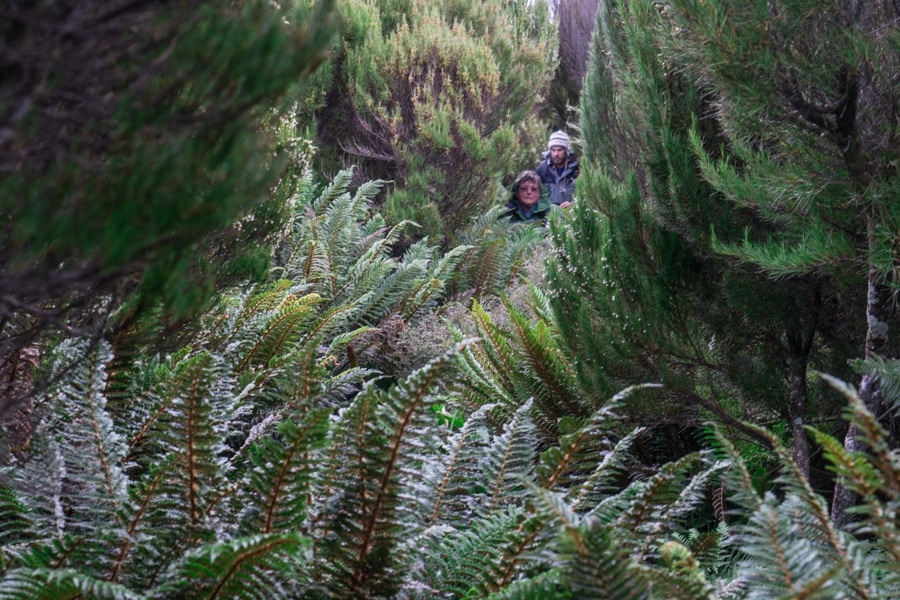
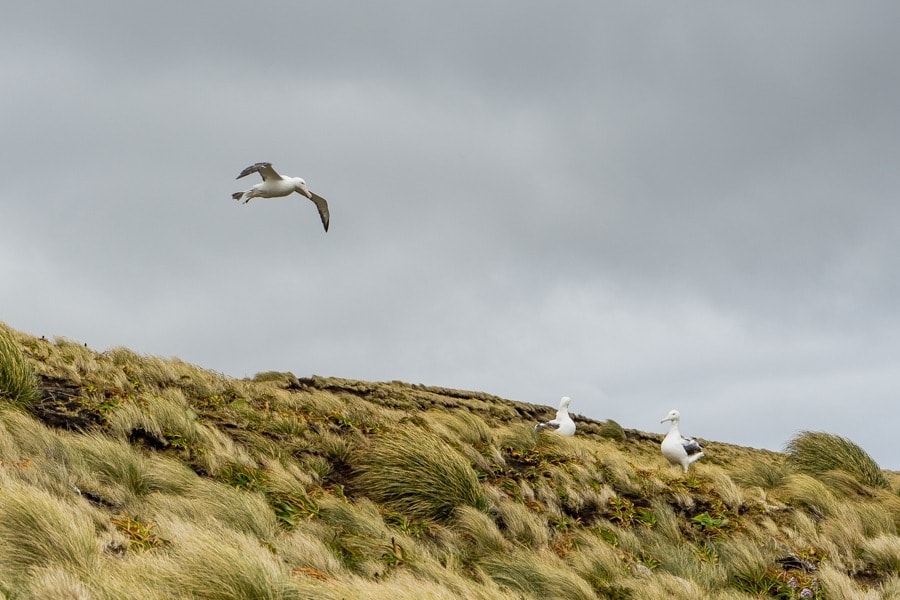
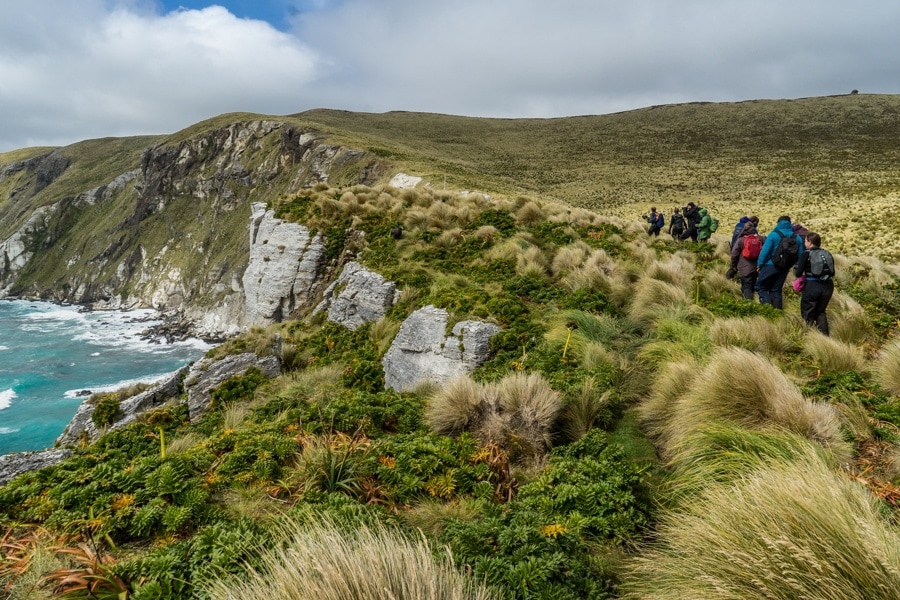
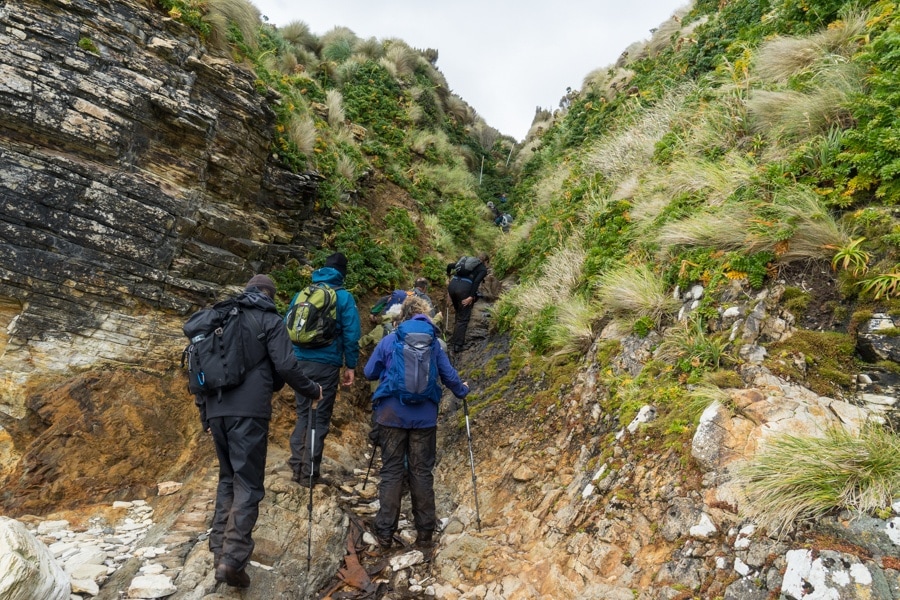
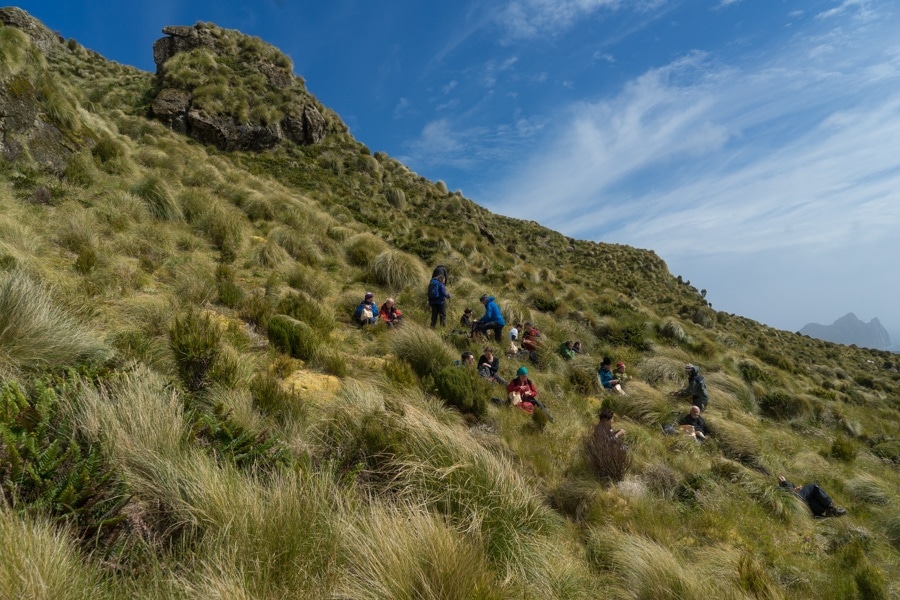
With a protected harbor to anchor in we had great luck for landings at Campbell Island, New Zealand’s southernmost island. Rocks, plants, and seabirds are the essence of Campbell Island and we went on a 12k hike around the island to get a great introduction to these 3 highlights.
The hike was demanding as few people get to this island and even though the trek was marked by some white poles occasionally, the brush was so high that it was easy to lose your way. Our expedition leader, Rodney, led us through the maze of brush. At other times the bog was so swampy that you had to step fast else you’d sink in!
The views were worth the tough trek. It was the best way to really see the biodiversity of the island. We walked up the sea cliff edge to spectacular views as Albatross flying overhead, and fields of megaherbs. Megaherbs are large flowering plants that have giant leaves and very bright flowers, unique to the subantarctic islands. When I was there in February, the prime flower season had passed, however, there were still a few fields of Pleurophyllum with its vibrant purple flowers.
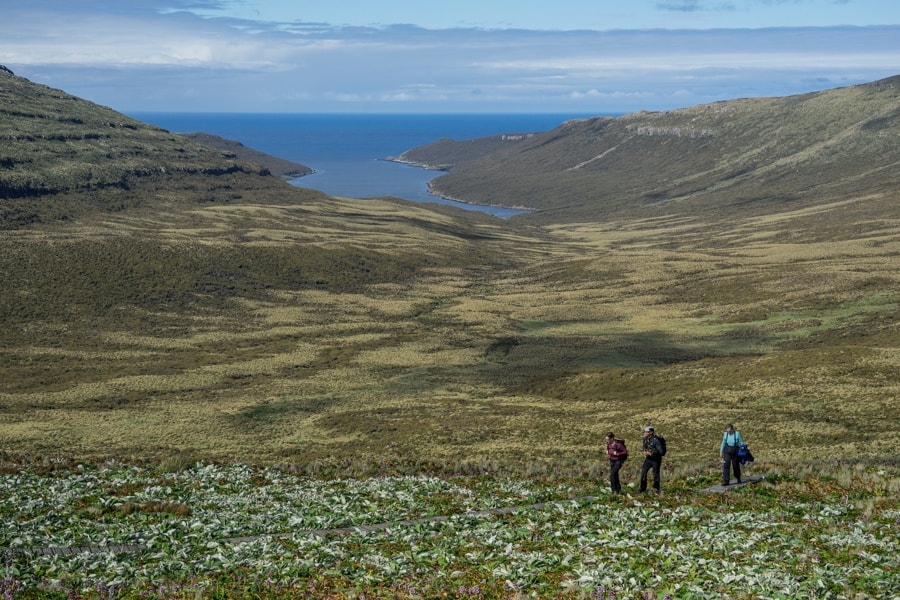
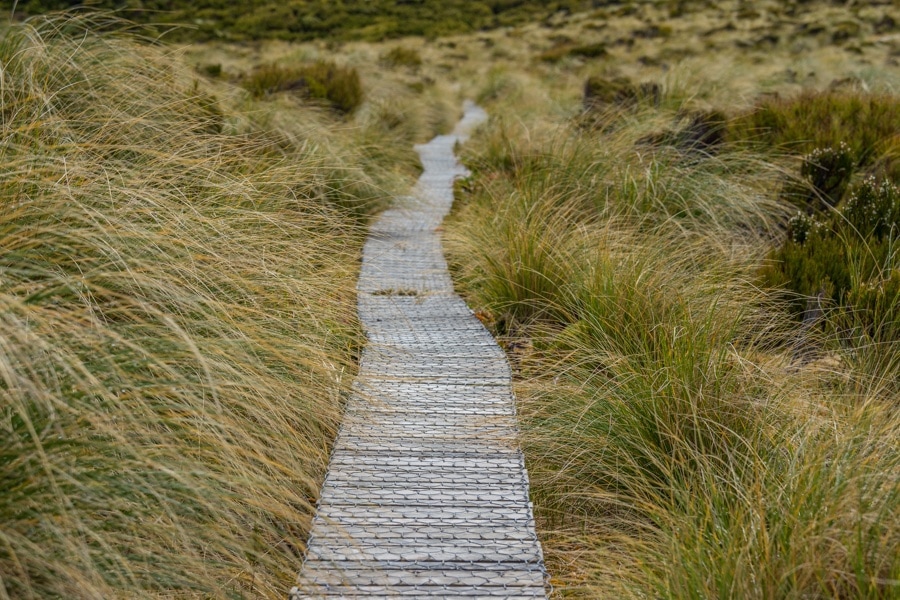
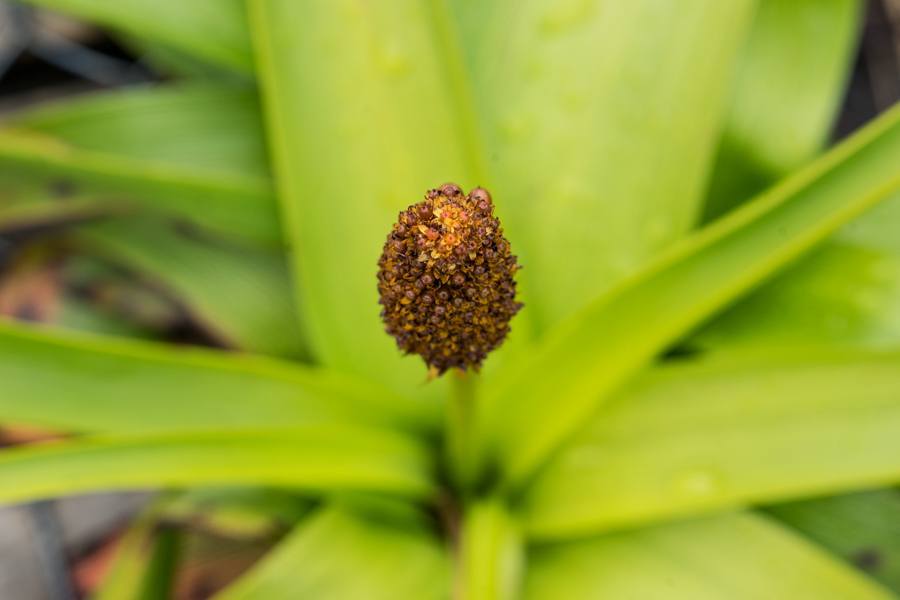
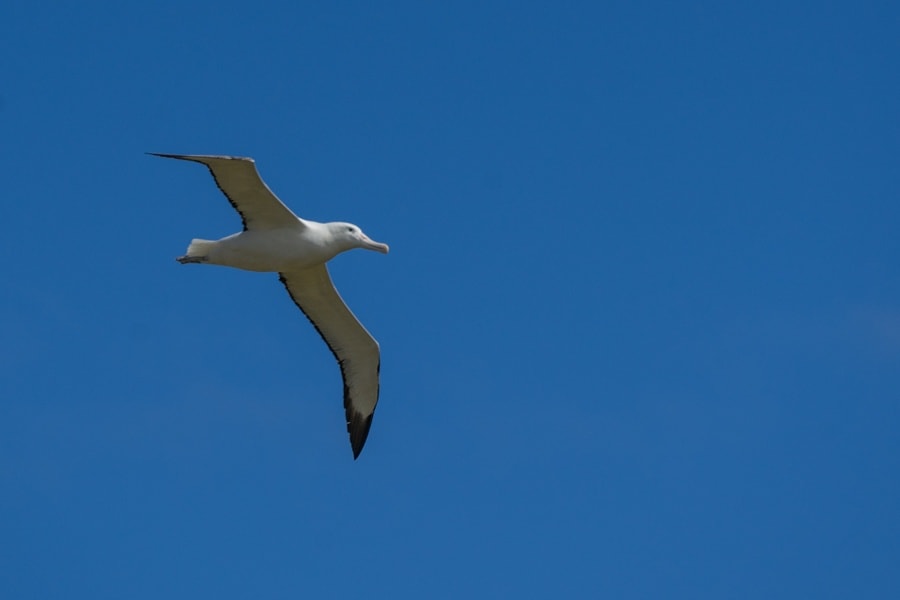
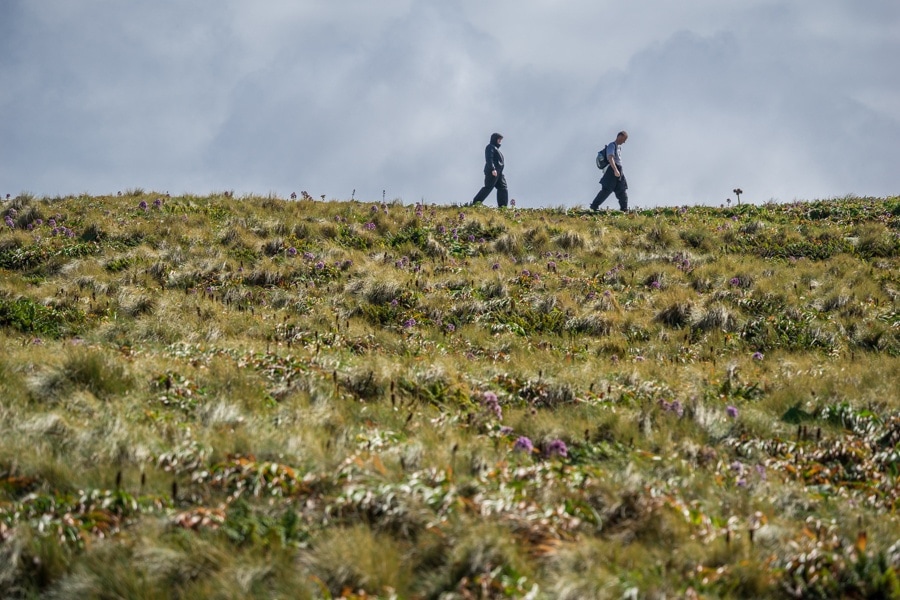
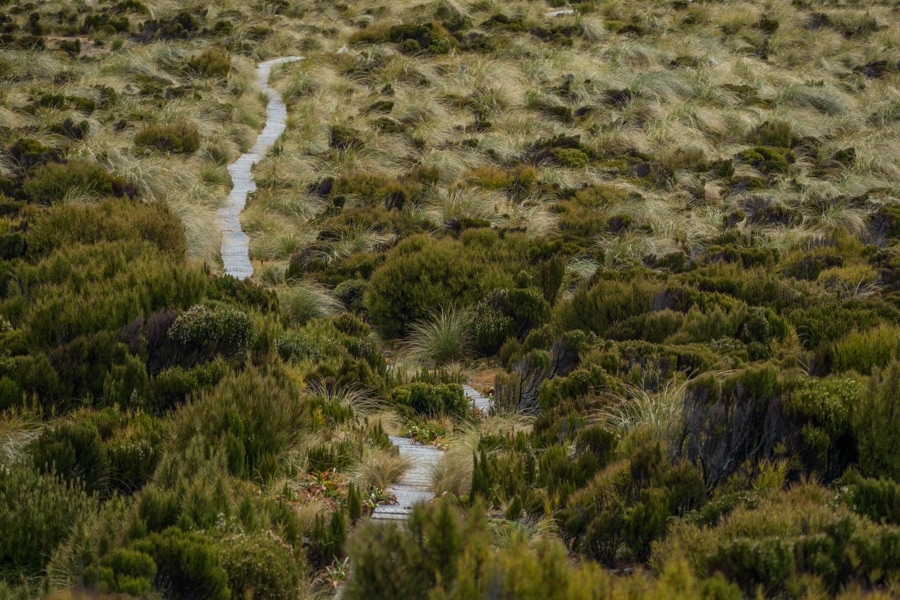
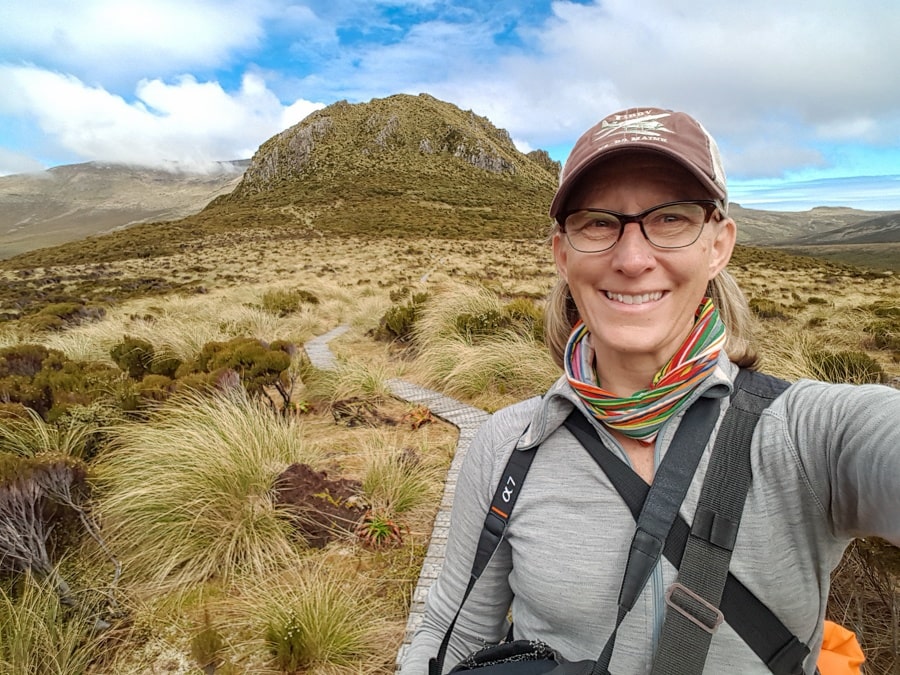
The next day we walked along another trail that was marked the entire way with a boardwalk. Southern Royal albatross nested right next to the boardwalk undeterred by the sudden foot traffic. As the afternoon lingered on, more and more albatrosses showed up at the top of the ridge to fly. It sort of felt like an airport at the top! It was great to have so much free time on Campbell to really soak it in and have some alone time in nature.
As you plan your vacation and various adventure travel activities in New Zealand, don’t overlook the remote New Zealand Islands. If you think the South Island is breathtaking, then you’ll be blown away by the subantarctic islands and wildlife.
Travel to the Subantarctic Islands
If you don’t have the time to go all the way to Antarctica, then check out the cruises that simply take you to the New Zealand Islands via Heritage Expeditions – Subantarctic Islands Cruises.
What photo equipment Should You Bring for the Subantarctic Islands?
See my complete list of favorite Travel Photography Gear
Disclosure:
I was a guest of Heritage Expeditions on this trip, however all opinions are my own.


By Tonkin Travel Vietnam April 11, 2017 - 1:35 am
Sometimes, you make me jealous! Hope that I could take those photos by myself soon. 😛
By Paket Umroh April 15, 2017 - 12:39 am
Wow beautiful scenery and animals there. I was amazed
By Agness of eTramping April 19, 2017 - 3:06 pm
These islands are must visit! They are already on my bucket list! The pictures you provided are stunning!